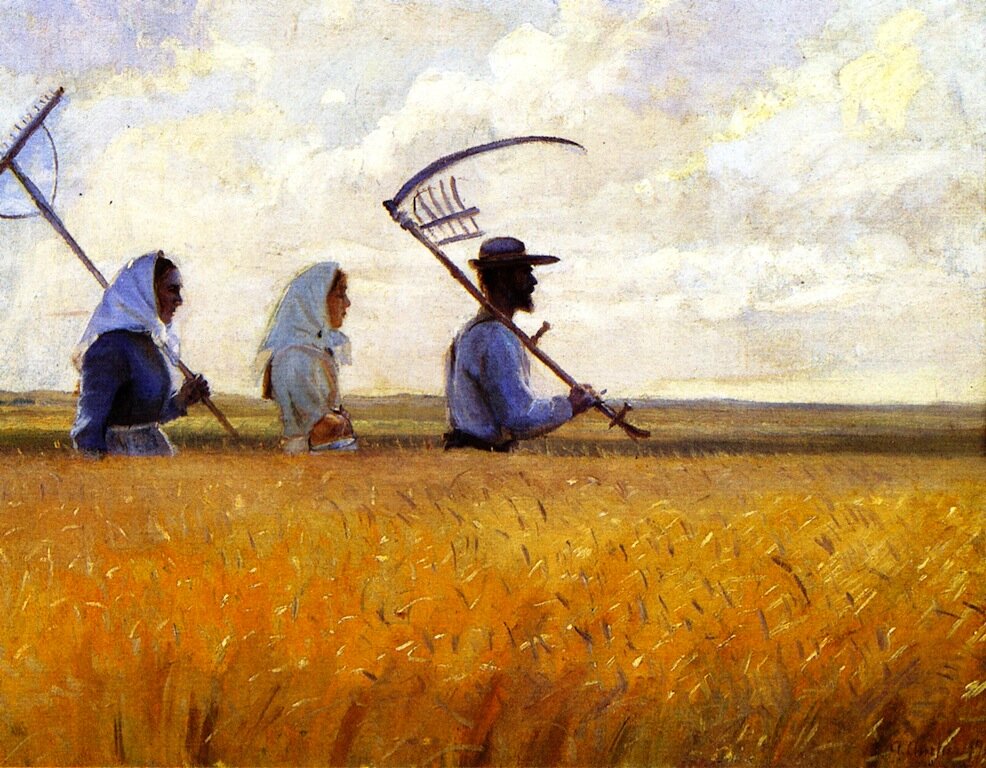RCA Records. Printed in U.S.A // Jean Sibelius (1865-1957) // Symphony No.2 in D, Op. 43 // Philadelphia Orchestra, conducted by Eugene Ormandy
Symphony No. 2
Allegretto
Tempo andante, ma rubato
Vivacissimo
Allegro moderato
Sibelius has an acutely developed sense of identification with nature and a preoccupation with myth that at one and the same time define his unique strength and his basic limitation. These preoccupations override his involvement in the human predicament, except in so far as it affects man’s relationship with nature. This is not to deny that as a nature poet he expresses feelings that can be shared by all, a sense of nature’s awe and power, even though the very nature with which he is concerned is regional. “” robert layton, Sibelius
But to some extent it is a matter of temperamental disaffinity: the impulsive flow of invention, the white-hot, feverish temperature, the asymmetric melodic thinking, the vivid colouring and the absence of reticence in Berlioz are elements which strike the Scandinavian sensibility as theatrical. Similarly the regional flavouring of much of Sibelius’s nature poetry, identified so intimately with the northern landscape, the icy intensity of some of the inspiration (which obscures for the casual listener its profound inner warmth) and the non-episodic nature of his thinking do not win favour among the French audiences, who are no more receptive to unfamiliar modes of thought than they were in the time of Berlioz. “” robert layton, Sibelius
my initial plan for this week had been to listen to sibelius’s Symphony No.3, but the extended stay of the record i purchased, at a pitstop somewhere in san francisco, resulted in my starting the week without it. and so scrolling through the rest of my sibelius records for an emergency backup i came to this Symphony No.2, not quite recalling anything from it since i listened to last october. his originality and distinct voice are the recurring themes in the sibelius anthologies that i’ve flipped through over the last couple of years--vague utterances for the most part--but also accurate. it seems that just three notes into this symphony and the whole of it returns to mind: the sprawl of its glaciated autumnal landscape, horizon-hinged by the generic features of a fjordic scene.
perhaps there’s no better proof of how long a year it’s been than my completely forgetting that i had spent all january of this year obsessing over every phrase in this symphony in over-preparation of my review for The Wholenote Magazine of its TSO performance. in light of that i can’t think of a better wrap to a month of sibelius than this symphony, which this time around was much more enjoyable sans the stress of having to deliver an official point of view. i suppose 2019 be, in retrospect, the year of sibelius: a TSO performance of his Violin Concerto in june, and this month brought a pair of his tone poems, his Symphony No.1 and revisiting that same explosive concerto for violin last week.
‘Harvest time, on the West Coast of Sweden’ Karl Nordström (1886)
While Sibelius can be said to transcend the period in a way in which a highly self-conscious figure like Stravinsky does not, he cannot be said to be independent of place in a way that Stravinsky is. What Sibelius has to say is intimately related to the atmosphere and sensibility of northern Europe--just as Mussorgsky is related to the Russian ethos. “” robert layton, Sibelius
yes it’s been a very long year---this is the 81st piece i’ve written this year for this blog and elsewhere; half the time i’ve no clue what i’m trying to get at (and that’s of course no reason to leave the page blank), and the other half procures a feeling of blessed proximity to whatever it is i’m looking for in these pages, that these pages are merely a preface to. ‘good music’ for me get consists almost entirely in the fact of musicians who are looking for something in their music, and the gauging of the sincerity of this searchingness is what i feel to be the only legitimate domain of the music critic. i’ll listen to anything as long as the artist means it.
still two months left in this our 2019, on here that means a seven-week stretch of russian composers that ends with handel’s Music for the Royal Fireworks alongside shouts of happy new year. perhaps a brief break thereafter would be expedient? though this isn’t enough of a chore to step away from. i am at the moment more concerned with what to do with the few things i’ve found on here along the way this year, with how to make time to harvest what is continuously being sown. though i’m sure of how easily that question will resolve itself, as that’s one of the liberties enjoyed when music is the topic of discussion: the usual urgency to make sense has less sway, less relevance, and the emphasis is instead on the experiential interval...
End and goal.--- Not every end is the goal. The end of a melody is not its goal; and yet: as long as the melody has not reached its end, it also hasn’t reached its goal. A parable. “” friedrich nietzsche, The Wanderer and his Shadow
with that said, the concluding movement of this symphony seems to always incur the feeling of reaching a goal, of the docking of a battle-worn vessel after a tiring campaign. it is in it, near the tail end, that partitions that hitherto separate the activity of the various sections of the orchestra are finally combined to create a unified, polyphonic, symphonic sound...
Without any change of gear, we arrive at the finale, as if emerging from a river into the open sea. But, this being Sibelius, the great melody that emerges majestically is not an easily flowing tune. It is built, once again, of fragments, passing from strings to brass. Underneath it, propelling the ship forward, trombones, tuba, and timpani keep up a relentless rhythm. The melody itself, inevitably, begins with the three-note rising phrase that has been the central motif of the symphony. “” robert philip, The Classical Music Lover’s Guide to Orchestral Music
‘Harvest Time’ Anna Ancher (1901)
the ballistic force that is finally exhausted in the tri-apical climax that concludes the symphony is discharged at the top of the third movement, the Vivacissimo that resuscitates the energy of the grumblings and hesitations of the second movement. as that rising melody in the opening finds it’s cadence, a brief development section bridges unto a quiet dialogue between cello and viola sections, undergirded by a repetitive rhythm on woodwinds (the star of which is the oboe, giving voice to the main solitary theme). the passage reaches a climax via trombones and trumpets before being subsumed, like a submarine, by deep bellows on low strings. emerging slowly from these depths, we find shrapnels of a new melody on woodwinds, the dramatic and concomitant entrance of trumpets and timpani once again bring the movement back to Allegro. high strings on violins climb us down from the climax as slightly muffled horns sing that same rising motif. another cleft in the advancing pace of the movement spotlights more of that mumbling dialogue between violas and cello, with woodwinds once again keeping rhythm. this second development is quickly abbreviated by a trumpet call that activates strings into a tremolo frenzy, driving the fleet to a final cohesive point on the horizon.
that’s it for sibelius this year (barring any accidents). i think it snowed a bit today. though it could have been hail; either way, a whole month of sibelius prepares in you a good conscience towards winter.
This book may need more than one preface, and in the end there would still remain room for doubt whether anyone who had never lived through similar experiences could be brought closer to the experiences of this book by means of prefaces. It seems to be written in the language of the wind that thaws ice and snow: high spirits, unrest, contradiction, and April weather are present in it, and one is instantly reminded no less of the proximity of winter than of the triumph over winter that is coming, must come, and perhaps has already come. “” Friedrich Nietzsche, The Gay Science—Preface
(song of the week: Hallucinogenics - matt maeson (Vallis Alps remix))
Drunken in Seattle, two more xans and without a paddle
I don't remember your face, or your hair, or your name, or your smile
'Cause I just couldn't open up, I'm always shifting
Go find yourself a man who's strong, and tall, and Christian
Vallis Alp, an australian electronic project (by way of seatle), redressed an original song by former christian-metal-rocker from norfolk virginia, matt maeson. replacing the stomp-and-holler sentimentality of the original with a experimental sonic experience that feels more befitting to maeson’s lyrics, distilled from his upbringing by jesus freaks and his subsequent period in prison, before recording Who Killed Matt Maeson, at the age of 24.
i first heard this song back in april, on my way to fetch what is apparently the best roti spot in parkdale; it took a while, but i eventually latched unto it...as if i could resist the cheeky allure of ‘Go find yourself a man who's strong, and tall, and Christian’...hmm yes, brilliant.



